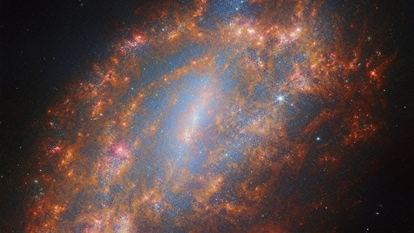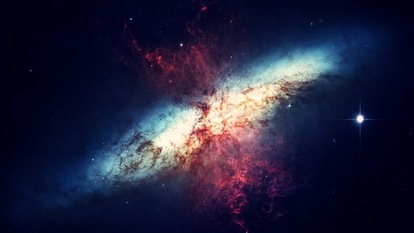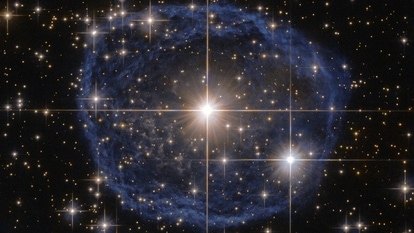This NASA photo of erupting solar flare is pure magic, but it also signals nasty solar storm heading for Earth
NASA has captured a stunning photo of a solar flare erupting on the surface of the Sun. However, the resultant solar storm can be a threat for Earth. Know what to expect.
_1650614444757_1650614518141.png)
The Sun has become a beehive of solar activity lately. Since April 15, the Earth has been bombarded by one solar storm after another as a result of non-stop solar flare eruption on the surface of the Sun. On Wednesday, April 20, the Solar Dynamic Observatory (SDO) of NASA managed to take a stunning photo of one of these solar flares in mid-eruption. While the image is awe-striking, the implications of it are also scary. The resultant solar storm is set to soon hit the Earth. And if it is anything like the two massive solar storms we have witnessed this week, it will spell trouble for the Earth.
NASA takes stellar photo of solar flare
In its blog post, NASA said, “NASA's Solar Dynamics Observatory captured this image of a solar flare – as seen in the bright flash in the upper left portion of the image– on April 20, 2022. The image shows a subset of extreme ultraviolet light that highlights the extremely hot material in flares, and which is colorized in yellow”. The image is important because it captures a solar flare mid-combustion. Multiple other solar flares setting off in distant locations on the Sun can also be seen in the image. The space agency later confirmed that the pictured solar flare peaked a day later on April 21.
From a stunning photo to a frightening solar storm
The image is beautiful to look at, but at the same time it comes with real life consequences. This week, the Earth has already been exposed to two X-class solar flares and both of them caused radio blackouts, GPS disruptions and slowdown in aviation services due to navigation system failure. Luckily, this particular solar flare was classified as an M-class, which NASA describes as a moderate solar flare. Usually, this tier of solar flares spark solar storms that do not cause much destruction. People will get to see auroras in the higher latitudes, however.
In recent times, the Sun has become a hotbed of solar flares. It is understood that this increased activity is due to two large sunspots, Region 2993 and 2994, in the northeast quadrant of the Sun. According to researchers, the activity is going to increase in the coming days, and the intensity of the magnetic radiation is also going to increase. As such, X-class solar flares are going to be more common and more destructive.
Catch all the Latest Tech News, Mobile News, Laptop News, Gaming news, Wearables News , How To News, also keep up with us on Whatsapp channel,Twitter, Facebook, Google News, and Instagram. For our latest videos, subscribe to our YouTube channel.




































